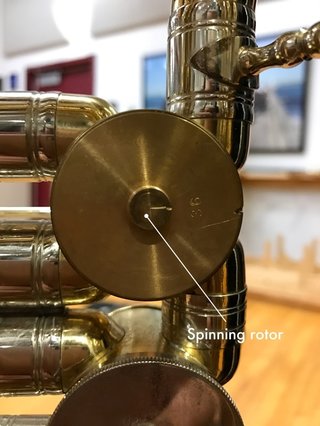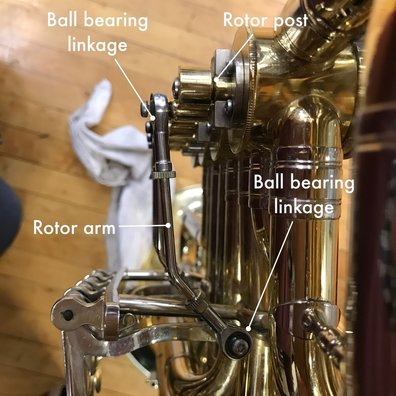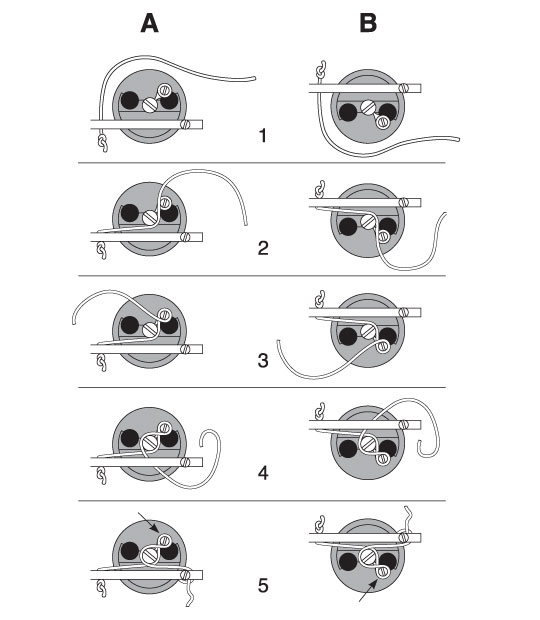Rotary Brass
|
Necessary Tools for all Rotary Brass Musicians
Recommended Mouthpieces
The clickable links above are recommended based on quality and value. These links are provided for a starting point--these models may be found for cheaper prices by shopping around. Some music stores will allow you try out mouthpieces before you buy them. Instrumentalists with allergies or sensitivities often opt to buy gold plating on mouthpieces, so if you are experiencing rashes, or itching around your embouchure (and your mouthpiece has been kept clean), you may want to look into gold mouthpieces. While used mouthpieces are available, it is recommended to buy new, or to closely inspect used mouthpieces for nicks and/or dents, and to make sure that the finish is not worn off. Ultimately, these mouthpieces could be a health hazard; of course, old mouthpieces that are worn can always be re-plated at music stores. If you have questions about any mouthpieces or accessories, contact Ms. Mattison or your section coach. |
Important to Remember
Recommended Instruments
Before purchasing an instrument, make sure that you are able to try out the instrument (either used or new). Most music stores will allow you to do this, and many online suppliers have a reasonable return policy for this reason. There are many great used instruments out there, but just like purchasing a used vehicle, when purchasing a used instrument directly from another person, it is best to buy locally, as this will allow you to see the instrument in person and allow you to play the instrument as well. |
|
|
Communities and Performers
The International Horn Society International Tuba/Euphonium Association Sarah Willis (Horn) and the Berlin Phil Horns Patrick Sheridan (Tuba) |
|
|
General Thoughts/Tips
|
Daily Maintenance
Weekly Maintenance
|
Long Term Care/Deep Cleaning
Once every few months, it's good practice to carefully disassemble rotary brass instruments (except for the rotors) and give them a good bath. Many college and professional level players take their horns into music stores or repair shops for a chemical flush and cleaning on an annual basis. If it's bath time for your instrument, follow the steps below to safely disassemble, clean, and reassemble your instrument. Before staring the process, make sure that nothing on your instrument is stuck--see your director or a music shop for assistance in removing a stuck part.
Restringing a Rotor Valve
In an emergency, you may have to restring a rotor valve. If you can stand to wait, do so until you can get your director to restring the valve for you. If you can't wait, you are welcome to try restringing it on your own. It is extremely important that you follow the restringing guide carefully, or else you will end up with valves that don't work. Most valves will match either the A or B valves below.
Once every few months, it's good practice to carefully disassemble rotary brass instruments (except for the rotors) and give them a good bath. Many college and professional level players take their horns into music stores or repair shops for a chemical flush and cleaning on an annual basis. If it's bath time for your instrument, follow the steps below to safely disassemble, clean, and reassemble your instrument. Before staring the process, make sure that nothing on your instrument is stuck--see your director or a music shop for assistance in removing a stuck part.
- Use a container large enough to soak your whole instrument-- a bathtub works well; you may place a rubber mat or towel in your bathtub to protect both it and your instrument from scratches.
- Carefully remove all slides and valve caps from your instrument. Arrange these parts in order so that you can easily remember where they need to be placed in the instrument after cleaning.
- Submerge your instrument in warm soapy water (mild dish detergent works best) and allow to soak.
- With the instrument submerged in the water, you may use a brush or snake to clean out your slides and valve caps. Don't forget to pay attention to the debris that collects in the valve caps. Do not soak your instrument for more than 20 minutes.
- After soaking, rinse all the parts with clean warm water and let the instrument dry. You can speed up the process with a hair dryer, but be careful not to use too hot a setting around the soldered parts of your instrument. Before reassembling the instrument, you must make sure that all of the parts are dry and free from dirt or build-up.
- Once everything has dried, reapply slide grease to each tuning slide, and don't forget to oil each rotor. Wipe off any excess grease, and polish your instrument before returning it to its case.
- For instruments with string linkages, the cords will stretch easily when wet. It's important to let the strings dry completely before playing.
Restringing a Rotor Valve
In an emergency, you may have to restring a rotor valve. If you can stand to wait, do so until you can get your director to restring the valve for you. If you can't wait, you are welcome to try restringing it on your own. It is extremely important that you follow the restringing guide carefully, or else you will end up with valves that don't work. Most valves will match either the A or B valves below.



